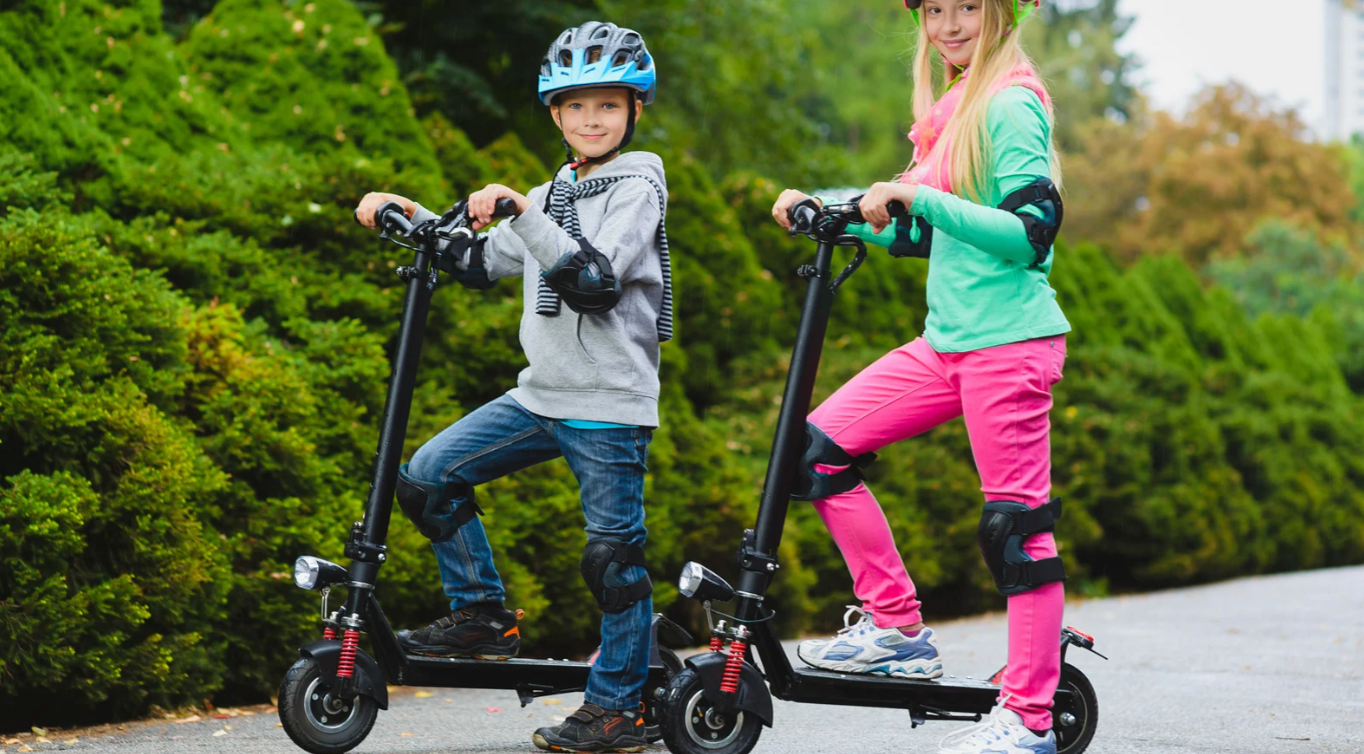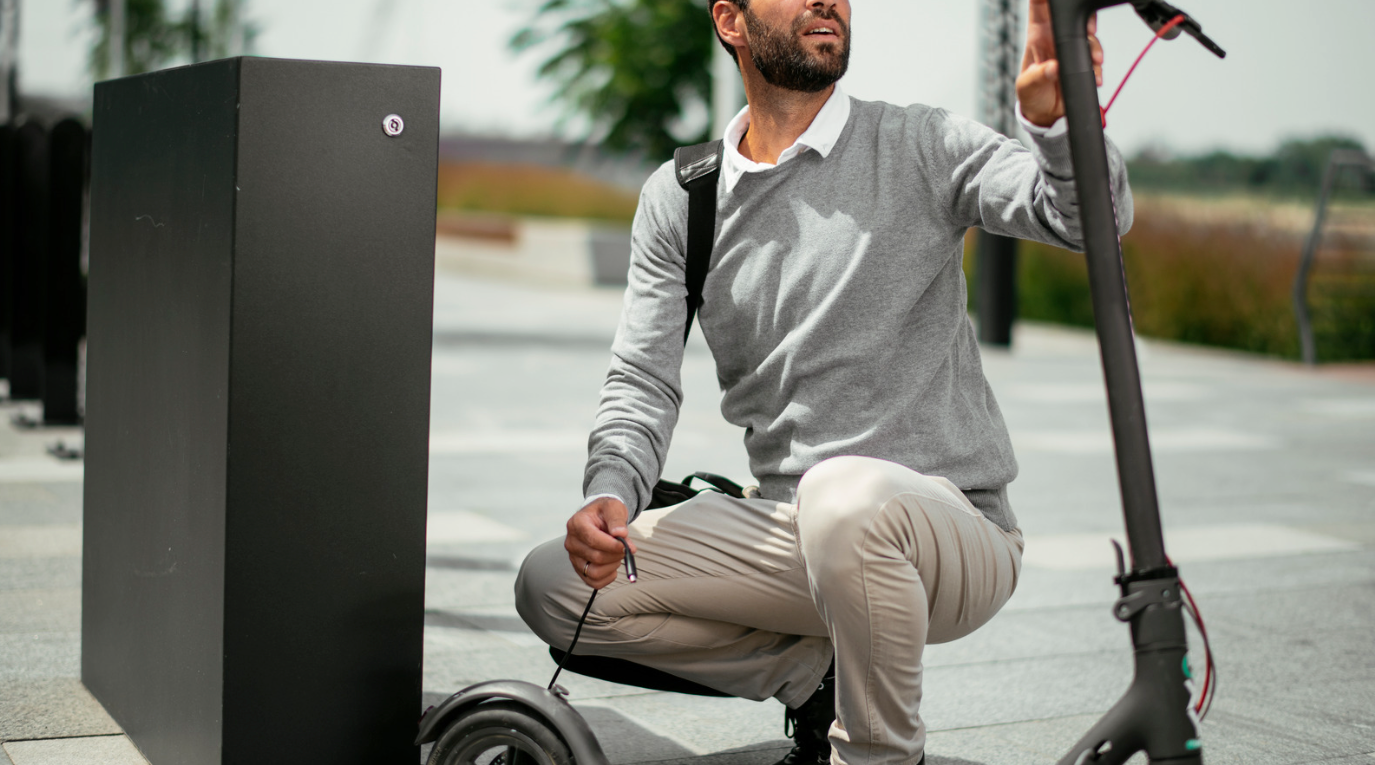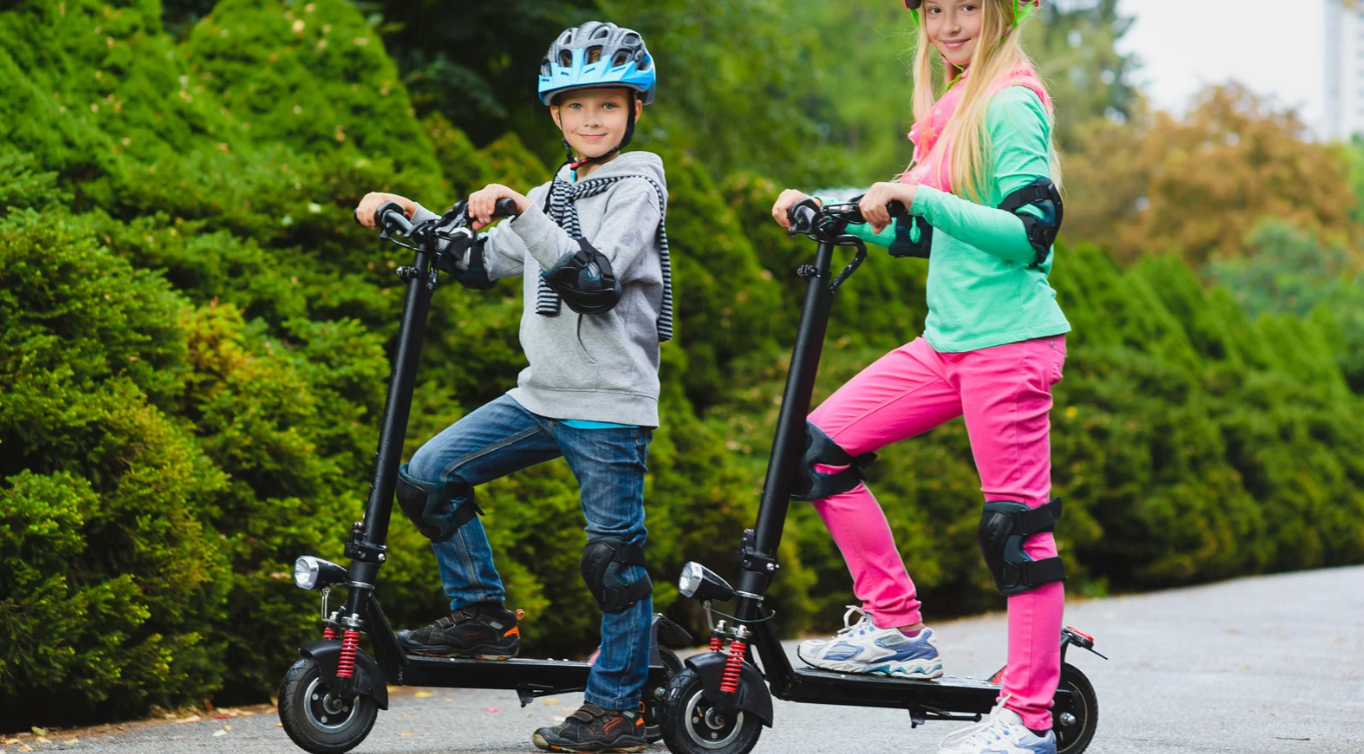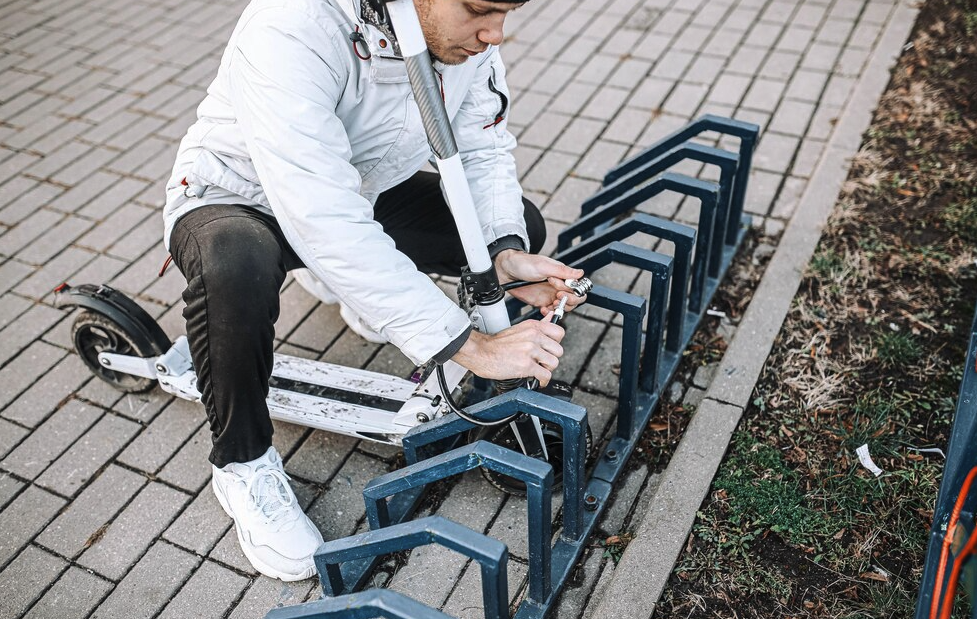Electric scooter safety is more important than ever as these vehicles become a popular, eco-friendly choice for commuting and recreation.
With more riders on the road, accidents and injuries have also increased, making it essential to understand how to stay safe.
Wearing a helmet, using protective gear, and riding at a controlled speed can greatly reduce your risk of injury. Like cycling, responsible riding and awareness of your surroundings make all the difference.
Whether you're new to scooters or a daily rider, knowing the basics of safe operation is key. Knowing these key safety tips will help you have a safer and more enjoyable experience on your electric scooter.
Electric Scooter Safety: Understanding the Risks
Riding an electric scooter can be a thrilling and practical way to get around, but it comes with certain risks. It's important to stay informed about these risks to ride safely.
Accident Statistics:
- E-scooter-related injuries and hospitalizations have been on the rise. Many accidents occur due to rider falls, collisions with other vehicles, and obstacles like uneven road surfaces.
Common Injuries:
- Head injuries: Without a helmet, you risk serious head trauma.
- Fractures: Wrists, arms, and legs are commonly fractured from falls.
Stay aware of road conditions and avoid distractions to reduce these risks. Ensure your e-scooter is maintained well to prevent mechanical failures.
Always wear a helmet and consider additional protective gear like knee and elbow pads. Be cautious in traffic and clearly signal your intentions to nearby drivers and pedestrians.
When you are renting an e-scooter, you may need to bring your own helmet since many rental systems do not provide them.
📌 Also Read: Essential Electric Scooter Maintenance Guide for New Riders
Electric Scooter Safety: Essential Protective Gear
🪖 Helmets are a must-have for electric scooter riders. They protect your head and brain from severe injuries. Studies show that helmets reduce the risk of head injuries by nearly 70%. Choosing a helmet that fits well and meets safety standards is crucial.
🛡️Wearing the right gear can make a big difference in safety. Protective clothing helps reduce scrapes and cuts during falls. Look for jackets and pants made from durable materials.
🧤Gloves are also important. They shield your hands and wrists, reducing injury during a fall. Choose gloves with proper padding and wrist support for the best protection.
Reflective gear increases visibility, especially when riding at night or in low light conditions. Reflective vests or strips on your clothing or backpack help others see you.
Appropriate footwear is key to maintaining control of your scooter. Wear closed-toe shoes with a good grip. Avoid sandals or any shoes that might slip off easily.
Consider adding other protective items to your gear:
- Knee and elbow guards to prevent fractures
- Wrist guards for extra protection to your hands
📌 Also Read: Can You Ride an Electric Scooter on the Sidewalk?
What to Do Before Riding an Electric Scooter
Before you hop on your electric scooter, take a few minutes to make sure everything is working properly. A quick inspection can prevent accidents and keep your ride safe and smooth.
Here’s what to look at:
Scooter Safety Inspection
- Brakes: Squeeze the brake lever and check for a smooth, responsive stop. If it feels loose or doesn’t slow the scooter properly, avoid riding until it’s fixed.
- Tires: Make sure the tires are fully inflated and have good tread. Flat or worn-out tires can reduce grip and increase your risk of slipping.
- Lights: If you’re riding early in the morning or after dark, check the front and rear lights. Headlights help you see the road, and taillights make you visible to others.
- Folding Mechanism and Frame: Ensure all folding joints are locked and the frame feels stable. If anything feels loose or damaged, don’t ride until it’s repaired.
Battery Safety Checklist
- Use the Right Charger: Always charge the scooter with the charger that came with it. Third-party chargers can damage the battery or create safety risks.
- Avoid Overcharging: Unplug the scooter once it’s fully charged. Leaving it plugged in for long periods can shorten battery life and cause overheating.
- Check for Damage: Look for swelling, leaks, or strange smells coming from the battery. These are signs of a serious issue—stop using the scooter and contact the manufacturer.
- Store Properly: Keep the scooter in a cool, dry place, away from heat sources and direct sunlight. Extreme temperatures can damage the battery over time.
By checking these key areas before every ride, you’ll stay safer, extend your scooter’s lifespan, and avoid preventable breakdowns.
📌 Also Read: How To Charge an Electric Scooter
Safe Riding Practices
Riding Techniques:
- Maintain a safe speed. High speeds can be dangerous, especially around pedestrians or in crowded areas. It’s safer and easier to stop quickly if you're not going too fast.
- Be cautious on uneven surfaces. Slow down and keep an eye out for potholes, bumps, and debris that could cause a fall.
- Always use both hands on the handlebars. This helps maintain control and balance. Avoid carrying items that distract you or make steering difficult.
Traffic Awareness:
- Follow traffic laws and signals. E-scooters must obey traffic signals just like other vehicles. Stopping at red lights and yielding to pedestrians is necessary for everyone's safety.
- Stay alert and aware of your surroundings. Watch for cars, bicycles, and pedestrians. Use mirrors (if equipped) or turn your head to check your blind spots before making any turns or lane changes.
- Stick to the bike lane if available. This is usually safer than riding on the sidewalk or in busy traffic lanes.
Taking these precautions helps ensure you have a safe and enjoyable ride on your electric scooter.
📌 Also Read: Electric Scooter Insurance: What You Need to Know
Legal Considerations and Local Regulations
When riding an electric scooter, it's important to know the local laws to ensure safety and compliance. Key legal requirements include age restrictions, helmet laws, and zones where you can ride your e-scooter.
Age Restrictions
Most regions require e-scooter riders to be at least 16 years old. The goal is to ensure that operators have the maturity and judgment necessary for safe riding.
Some areas might enforce stricter age requirements, so it's wise to check local regulations.
For example, electric scooters are legal in most states, except for places like Pennsylvania, where restrictions are tighter. [Also Read: Electric Scooter Age Limit]
Helmet Laws
Wearing a helmet is a common safety recommendation, and in some places, it is legally required. In California, for example, underage riders must wear a helmet.
Whether mandatory or not, helmets offer critical protection and are advised for all riders. Check if your area follows similar guidelines, as safety should always come first, even if the law doesn't specifically require it.
Riding Zones
Legal riding zones for e-scooters often include bike lanes and some roadways, but sidewalks are usually off-limits. Understanding where you can legally ride is crucial to avoid fines and ensure safety.
Typically, e-scooters on roads must follow the same traffic rules as bicycles. It's a good idea to know your area's specific rules about designated riding areas to avoid getting into trouble.
Final Thoughts on Electric Scooter Safety
Staying safe on an electric scooter takes more than just wearing a helmet. It means knowing your local laws, staying alert, and making smart choices every time you ride.
Whether you're a beginner or an experienced rider, continuous learning and regular safety checks go a long way.
Keep up with local regulations, ride responsibly, and never underestimate the importance of proper gear and maintenance. Safe riding protects not just you, but everyone around you.
Looking for a ride that combines performance and reliability?
Explore our top collections:
FAQs About Electric Scooter Safety
Riding an electric scooter involves understanding safe practices, being aware of environmental factors, and knowing the legal requirements. Below are common questions that address these aspects of e-scooter use.
Is It Safe to Ride an Electric Scooter at Night?
Yes, riding an electric scooter at night can be safe if you take the right precautions. Use strong front and rear lights, wear reflective clothing, and avoid dark or poorly lit areas. Ride slower and stay alert for cars, pedestrians, or obstacles. Visibility is key to staying safe after dark.
Can I Ride an E-scooter in the Rain?
You can ride an e-scooter in light rain, but it depends on the scooter’s water resistance rating. Avoid deep puddles or heavy rain, as water can damage the battery or motor. Wet surfaces reduce traction, so ride slowly and brake early. Always check your scooter’s manual before riding in wet conditions.
Do I Need Insurance for My Electric Scooter?
In some areas, insurance for electric scooters is required by law, especially for road use. Even if it’s not mandatory, having insurance can protect you against theft, damage, or accidents. Check local regulations to see what's needed in your area. Personal liability coverage is also a good idea for added safety. [Read More: Electric Scooter Insurance: What You Need to Know]
Are There Weight Limits for Electric Scooters?
Yes, all electric scooters have weight limits set by the manufacturer. Most models support between 220 to 300 pounds, while heavy-duty scooters can hold more. Riding over the limit can damage the scooter and reduce performance. Always check the specs before riding to stay safe.
What Are the Hazards of E-scooters?
E-scooters can pose risks like falls, collisions, or mechanical failures. Uneven roads, high speeds, and poor visibility increase these dangers. Riding without a helmet or in busy traffic also raises your chances of injury. Safe habits and regular maintenance can help avoid most hazards.
How Can You Be Safe on a Scooter?
To stay safe on a scooter, always wear a helmet and protective gear. Follow traffic rules, ride at a safe speed, and stay alert to your surroundings. Use lights and reflectors if riding at night. Keep your scooter in good condition with regular checks on brakes, tires, and battery.








Leave a comment
All comments are moderated before being published.
This site is protected by hCaptcha and the hCaptcha Privacy Policy and Terms of Service apply.